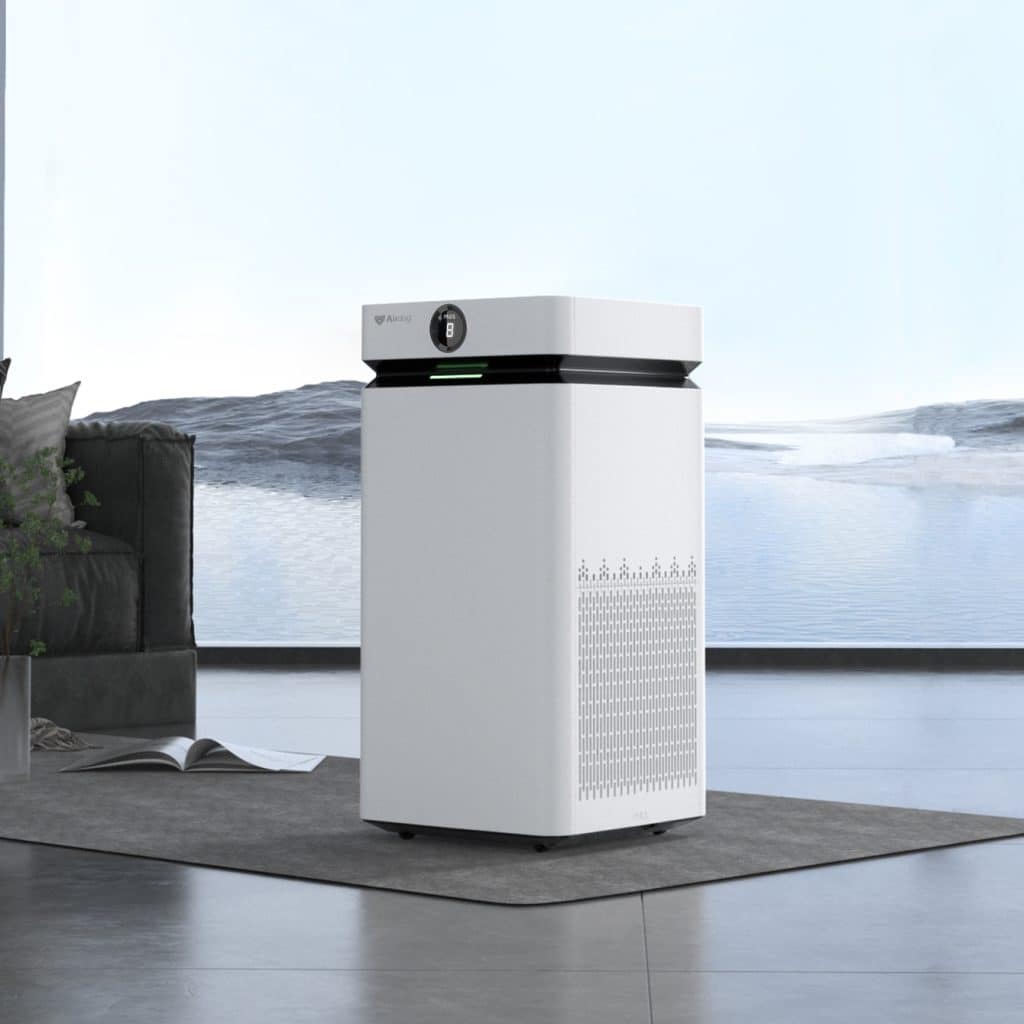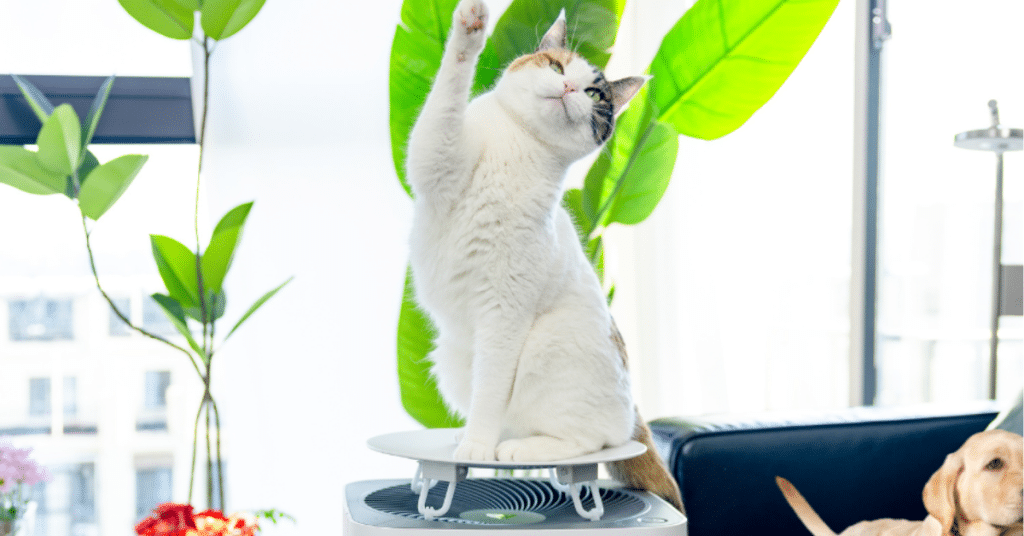As our understanding of health grows more holistic, one element is rising in importance: the air we breathe. For years, indoor air quality has been considered primarily a human wellness issue, even linked to allergies, sleep, and cognitive performance. But for the estimated 66% of U.S. households that include a pet, the conversation is shifting.
The reality is that indoor air pollution doesn’t just impact people. It also affects the animals we live with, and often more acutely than we realize.
Why Indoor Air Quality Is Foundational — and Overlooked
We now know that indoor air can be two to five times more polluted than the air outside, according to EPA estimates. This is largely due to a combination of synthetic building materials, cleaning chemicals, dust, dander, and limited ventilation.
Pets, who spend most of their time at ground level where airborne particles settle, are often exposed to higher concentrations of indoor pollutants. Unlike humans, they can’t avoid irritants or tell us when something’s wrong. One major concern is volatile organic compounds (VOCs)—gases released from products like cleaning supplies, paints, air fresheners, and even furniture. Prolonged exposure to VOCs and allergens can affect a pet’s respiratory system, immune response, and even neurological health over time.
How Indoor Pollutants Affect Pet Physiology Differently
Pets process airborne toxins differently from humans due to fundamental anatomical and physiological differences. Dogs, for example, have a significantly larger surface area in their olfactory epithelium compared to humans, with up to 300 million scent receptors versus our 5 million. This enhanced sensitivity makes them more vulnerable to chemical-laden scents, synthetic cleaning agents, and smoke.
In cats, the structure of the bronchial tree and smaller airways makes them prone to developing reactive airway disease, particularly when exposed to fine particulate matter and smoke. Veterinary studies have shown a dramatic increase in feline asthma in urban environments, much of which is attributed to air pollution inside homes.
Moreover, smaller body mass and faster respiration rates in many pets amplify the impact of airborne toxins. An irritant that causes mild eye-watering in a human could induce chronic coughing or inflammation in a pet over time.
The Shared Burden of Airborne Allergens
Humans and animals often react to the same triggers: dust mites, pet dander, mold spores, and particulate matter. But while allergy medications and lifestyle changes are accessible for us, pets typically rely on us to recognize subtle signs like persistent itching, coughing, wheezing, or unexplained fatigue.
A study showed that cats exposed to indoor cigarette smoke had a tenfold increase in asthma risk. Dogs in homes with poor air circulation have shown elevated markers for bronchitis and even brain inflammation. These aren’t isolated cases; they’re part of a growing body of evidence pointing to indoor air as a key variable in long-term pet health.
Seasonal Air Quality Spikes: A Summer Case Study
During summer, indoor air quality often worsens. High pollen counts and outdoor pollutants enter through open windows or hitch rides on clothing and fur. Heat increases the off-gassing rate of plastics and household chemicals. Even efforts to control pet odor with sprays, scented candles, or plug-ins can contribute to VOC buildup.
For pets, these exposures are cumulative. Over time, even low-level pollutants can contribute to inflammatory conditions, immune dysregulation, or respiratory distress. And for multi-pet households or those with children, the compounding effects are even more pronounced.
A Technological Shift in Air Purification

Traditional air purifiers have long relied on HEPA filtration, a method that passively traps particles but doesn’t neutralize them, and often requires frequent filter replacements. That model works, but it’s limited in both scope and sustainability.
Airdog, a company focused on air health innovation, takes a different approach. Their Pet Air purifier uses TPA® (Twin Pole Active) technology, which creates a high-voltage electric field to eliminate microscopic airborne pollutants. With particle capture down to 0.0146 microns, it surpasses standard HEPA limits, targeting not only dander and pollen but pathogens and gases such as ammonia and hydrogen sulfide.
Crucially, this system is filter-free and washable to reduce both environmental waste and long-term ownership costs.
What the Data Shows
Airdog’s internal testing revealed high-level removal rates for pollutants most relevant to pet households:
- Dog dander: 98.1%
- Cat dander: 97.9%
- Dust mites: 96.4%
- Pollen: 99.1%
- Cat calicivirus: 99.99%
- H1N1 influenza virus: 99.9%
- Ammonia: 99.5%
These results are paired with a high Clean Air Delivery Rate (CADR) that is enough to purify a standard living room in under 20 minutes. A smaller 220-square-foot room can be cleared in just 8 minutes. In practice, this translates to meaningful improvements in air quality, especially after vacuuming, grooming, or when windows are open.
The Future of Pet-Safe Smart Homes
As smart home ecosystems expand from voice assistants to lighting, thermostats, and environmental sensors, air purification is also becoming a key component of digital wellness design. Yet few systems explicitly consider the health needs of pets alongside humans.
That’s beginning to change. Products like Airdog’s Pet Air mark a shift toward environmental technologies that prioritize shared wellbeing, where the needs of every resident, human and animal, are accounted for. Going forward, air health may become as central to pet care as nutrition and preventive vet visits.
In the meantime, recognizing indoor air as a factor for both risk and protection is a smart first step.
